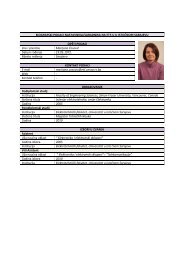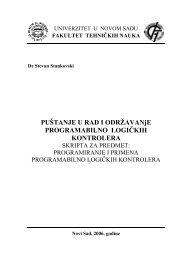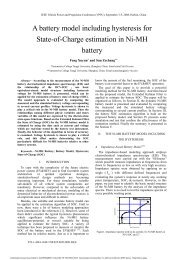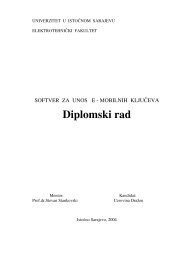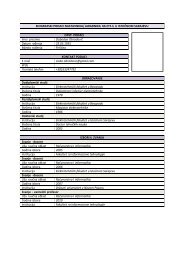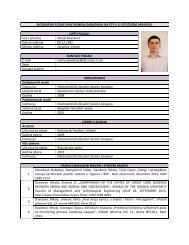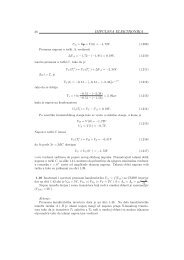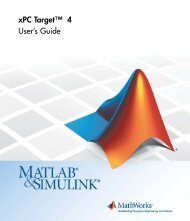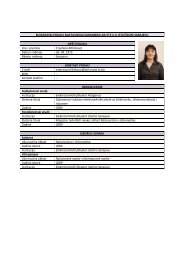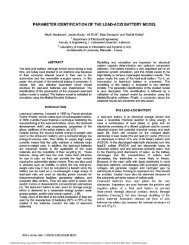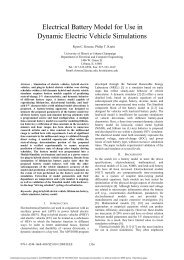Programmable Controllers: Theory and Implementation
Programmable Controllers: Theory and Implementation
Programmable Controllers: Theory and Implementation
- No tags were found...
Create successful ePaper yourself
Turn your PDF publications into a flip-book with our unique Google optimized e-Paper software.
Introduction to PLC Programming <strong>and</strong> <strong>Implementation</strong>—from relay logic to PLC logiccertain tasks in our daily lives. The procedure that a person follows to gofrom home to either school or work is an algorithm—the person exits thehouse, gets into the car, starts the engine, <strong>and</strong> so on. In the last of a finitenumber of steps, he or she reaches the destination.The PLC strategy implementation for a control task closely follows thedevelopment of an algorithm. The user must implement the control from agiven set of basic instructions <strong>and</strong> produce the solution in a finite number ofsteps. If developing an algorithm to solve the problem becomes difficult, heor she may need to return to the control task definition to redefine theproblem. For example, we cannot explain how to get from where we are toBullfrog County, Nevada unless we know both where we are <strong>and</strong> whereBullfrog County is. As part of the problem definition, we need to know if aparticular method of transportation is required. If there is a time constraint, weneed to know that too. We cannot develop a control strategy until we have allof this problem definition information.The fundamental rule for defining the program strategy is think first,program later. Consider alternative approaches to solving the problem <strong>and</strong>allow time to polish the solution algorithm before trying to program thecontrol function. Adopting this philosophy will shorten programming time,reduce debugging time, accelerate start-up, <strong>and</strong> focus attention where it isneeded—on design when designing <strong>and</strong> on programming when programming.Strategy formulation challenges the system designer, regardless of whetherit is a new application or the modernization of an existing process. In eithercase, the designer must review the sequence of events <strong>and</strong> optimize controlthrough the addition or deletion of steps. This requires a knowledge of thePLC-controlled field devices, as well as input <strong>and</strong> output considerations.3 IMPLEMENTATION GUIDELINESA programmable controller is a powerful machine, but it can only do what itis told to do. It receives all of its directions from the control program, the setof instructions or solution algorithms created by the programmer. Therefore,the success of a PLC control program depends on how organized the user is.There are many ways to approach a problem; but if the application isapproached in a systematic manner, the probability of mistakes is less.The techniques used to implement the control program vary according to theprogrammer. Nevertheless, the programmer should follow certain guidelines.Table1 lists programming guidelines for new applications <strong>and</strong> modernizations.New applications are new systems, while modernizations are upgradedexisting control systems that have functioned previously without aPLC (i.e., through electromechanical control or individual, analog, loopcontrollers).Industrial Text & Video Company www.industrialtext.com 1-800-752-83985



